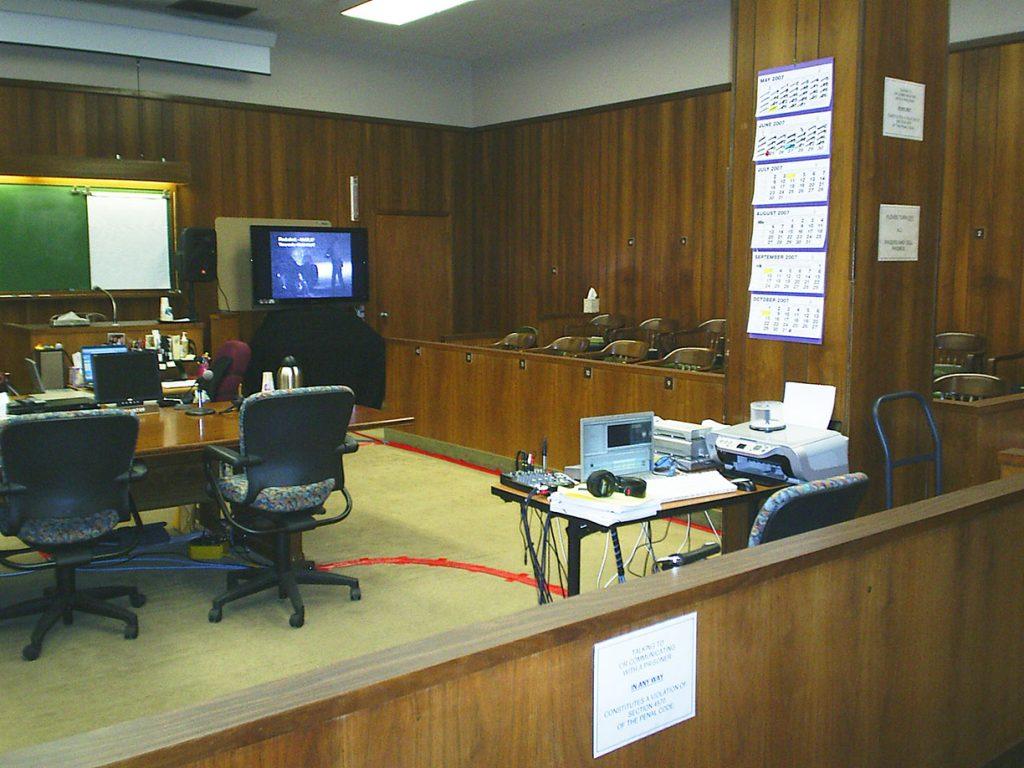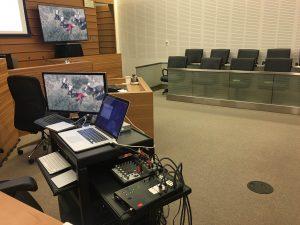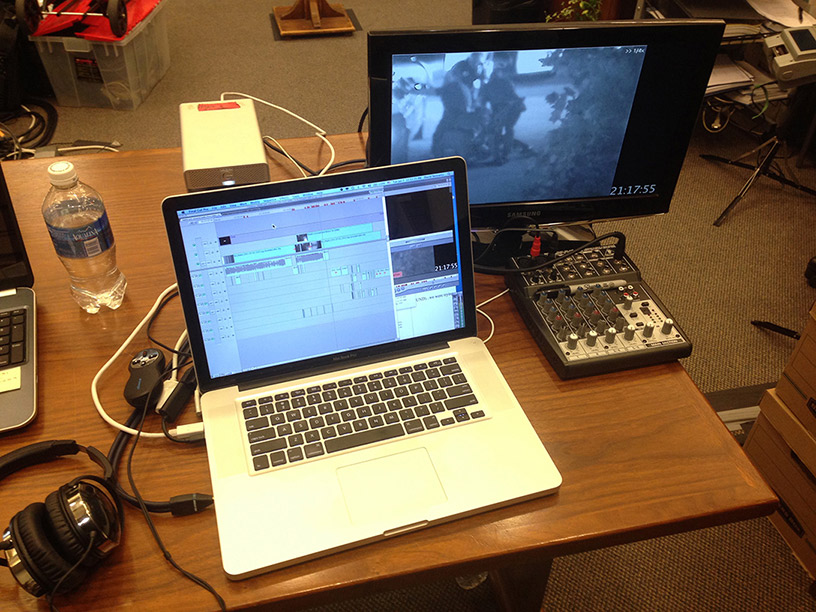Courtroom technical equipment setup of audio and video systems
The presentation of audio and video evidence in court, such as from security video cameras, surveillance systems, police body-worn Digital Audio Recorders (DARs) and body worn now video cameras, and 911 calls, requires that the courtroom also be equipped with the latest digital video and audio playback equipment, including high-quality speakers and high-definition, flat screen television video displays. When necessary, an NCAVF courtroom technician can be brought in to set up and operate this digital media playback equipment during trial. DO NOT rely on the court’s outdated and low-quality projection screen systems! Our experience in court has shown the bad playback quality and unreliability of court-supplied equipment time and time again. If you wish to see the details of your media evidence — with clarity for the jury to discern between a wire, a shadow, or a color of light, be sure through testing prior to trial that your playback system is doing what you hope.

A “control table” can be set up in court, allowing an attorney to make instant shifts in strategy at a moments notice.
This is especially helpful in preparing for cross examinations.

High definition televisions provide much more detail and clarity than large screen projections, and high-quality audio can be crucial for a jury to hear the evidence clearly.
NCAVF is often asked not only to enhance audio and video and prepare it for court but also to research the video and audio playback equipment needed for display in court, and sometimes to assemble the in court video system and operate the equipment for the duration of the case. This allows the defense to have instant access to our services and create on-demand changes in their presentations and cross examinations of witnesses. This flexibility in displaying the recorded video evidence can make a huge difference in defending the case.
Keeping the jury engaged
Rebutting arguments with on-the-spot visual proof was, and is, dramatic and interesting for the jury. In fact, over the course of trial, a jury can grow noticeably weary (and even nap!) when the prosecuting attorney presents his case, but when the defense presents their case, the jury should sit up in their seats with full attention. Video and audio evidence simply makes a case more interesting.
